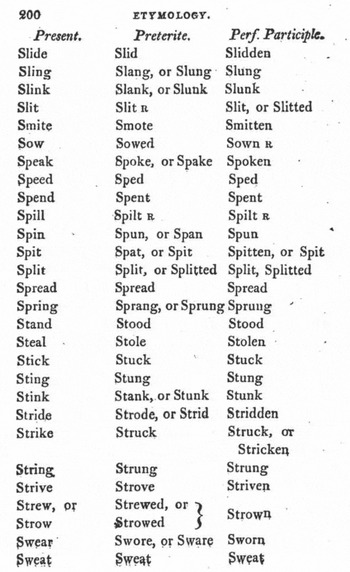


The choice of which to use essentially follows the same rules as in Modern English. In the same way, Old English has two infinitives for each verb: in the case of "to sing" they would be singan and tō singenne. The choice of which to use is dictated by the role that the infinitive plays in the sentence.

In Modern English, we really have two infinitives, as exemplified by the phrases: "I can sing" and "I want to sing". Likewise in Old English, the infinitive is only used in specific circumstances but when it is used, it maybe used for any person. You only say "be" in specific circumstances, such as when it follows a helping verb like "should": "he should be". Just as in Modern English, where "be" is the infinitive form of "be", you cannot just say "he be", you must say "he is". The infinitive form of the verb, is not specific to any person (so to speak, it is "infinite" - "not finitely limited to any particular person") however, it is only used in specific situations. This form ending in -s in Modern English, is limited, or finite to third person singular (he, she, it, particular people, places, things, etc). What is the infinitive form? Recall how in Modern English, we add -s to a verb when we are talking about he, she, or it: "he love s", "she sing s", "it bring s". First, we should look at what the various parts of the verb are for. More details of how verbs are conjugated will be supplied later. Not every verb is conjugated exactly like this: this, as it happens, is a Class III strong verb, and verbs are conjugated differently according to their class. Here is an example of the various parts of one Old English verb singan, "to sing". Plural (which is the same for all people) (ƿē/ġē/hīe gāþ - we/you all/they go).Ĭompare to Modern English, which is simpler and only has two forms:.Third person singular (hē/hēo/hit gǣþ - he/she/it goes).Second person singular (þū gǣst - you alone go).You can see that there are four different ways the word "gān" is changed for different people and numbers in Old English: Look at this example of how an Old English changed depending on the person and number it is used with, compared with how it is done to a lesser extent in Modern English: An example of how verbs change to agree for number and person in Modern English is when we add "-s" to third person singular verb, as in "He sings well" but we don't add "-s" for anything else, including third person plural, for example "They sing well". This is sometimes the case even in Modern English, but more so for Old English. Verbs have to agree with the subject of the sentence in number (singular when the subject of the verb is just one, and plural when the subject of the verb is more than one), and person (I, you, he/she/it).


 0 kommentar(er)
0 kommentar(er)
